- Stat Significant
- Posts
- Which Decades Inspire the Most Art? A Statistical Analysis
Which Decades Inspire the Most Art? A Statistical Analysis
Which historical eras are consistently portrayed in films and novels?
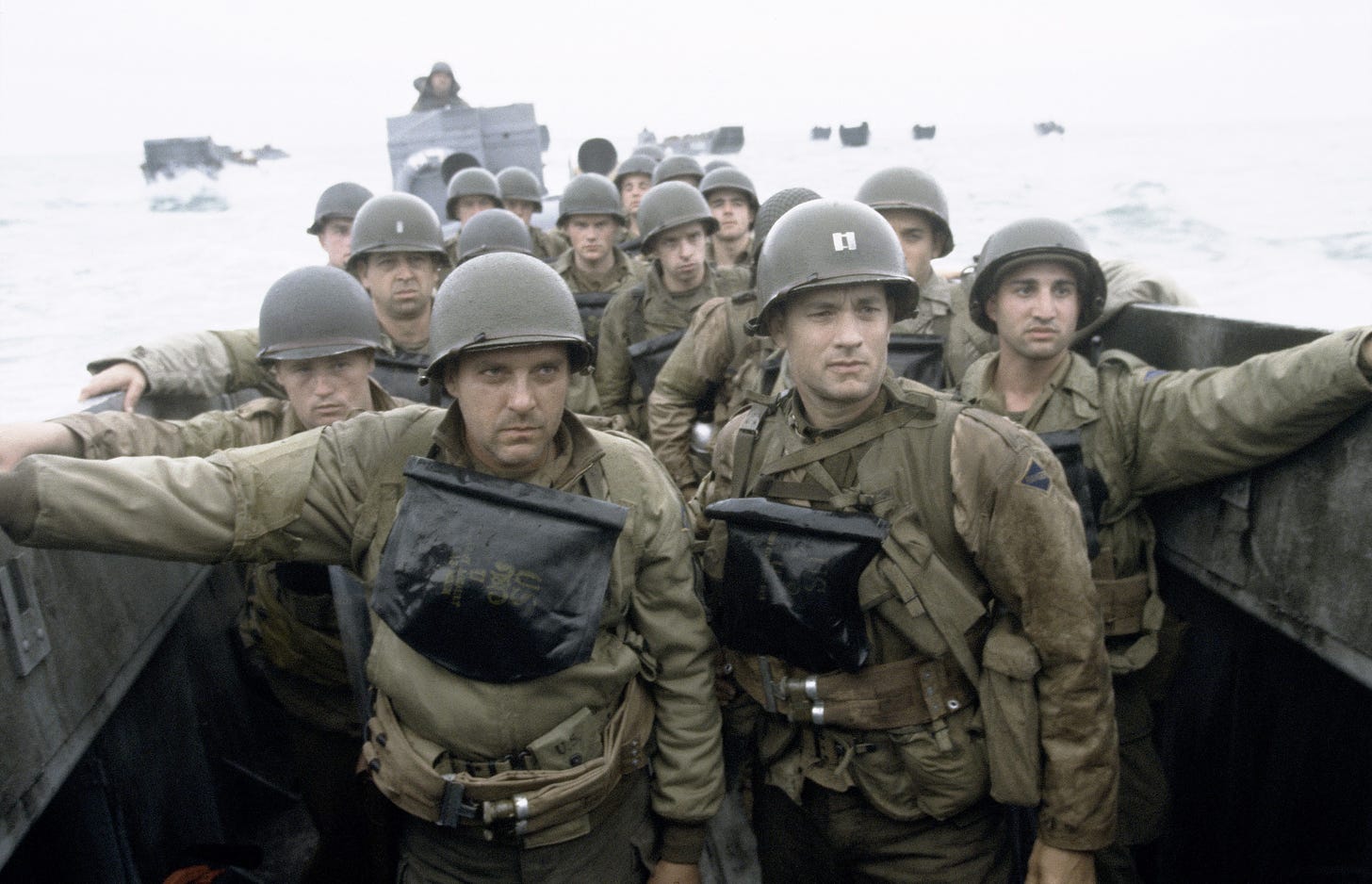
Saving Private Ryan (1998). Credit: Dreamworks.
Intro: World War II in the 1990s
The turn of the century was an excellent time for the 1940s. Between 1992 and 2001, several high-profile movies and novels mined their setting and storylines from the drama of WWII and pre-war Eurasia. During this span, moviegoers were treated to a never-ending parade of World War II films, including Saving Private Ryan, The Thin Red Line, Life is Beautiful, Enemy at the Gates, and, who could forget, Michael Bay's Pearl Harbor. Similarly, the literary world brought readers Atonement, The English Patient, The Amazing Adventures of Kavalier & Clay, Enigma, Memoirs of a Geisha, Cryptonomicon, and Captain Corelli's Mandolin.
One explanation for this historical fixation emphasizes serendipity—that it's merely coincidence when competing Wyatt Earp films hit theaters or when several best-sellers about World War II code-breakers capture the zeitgeist. And yet, there's likely more at play here. Novelists and screenwriters develop content in response to cultural trends, interpreting artistic appetites and producing stories to capitalize on perceived patterns. In short, when creatives turn to the past, it's not without reason.
So today, we'll explore the periods most often depicted in novels and films, how favored historical settings change over time, and how these artistic works (rightfully or wrongfully) serve as historical documents for future generations.
Which Years Are Most Frequently Depicted In Art?
The first major American film to tackle the Vietnam War was The Green Berets. The story of American special forces valiantly fighting for their country, the film was produced as a pro-war, propagandistic response to anti-war sentiment—and was (quite literally) made in collaboration with the Pentagon.

The Green Berets (1968). Credit: Warner Brothers.
Ten years later, Michael Cimono's The Deer Hunter would paint a radically different portrait of the war, crafting a harrowing portrayal of warfare and its profound effect on American communities.
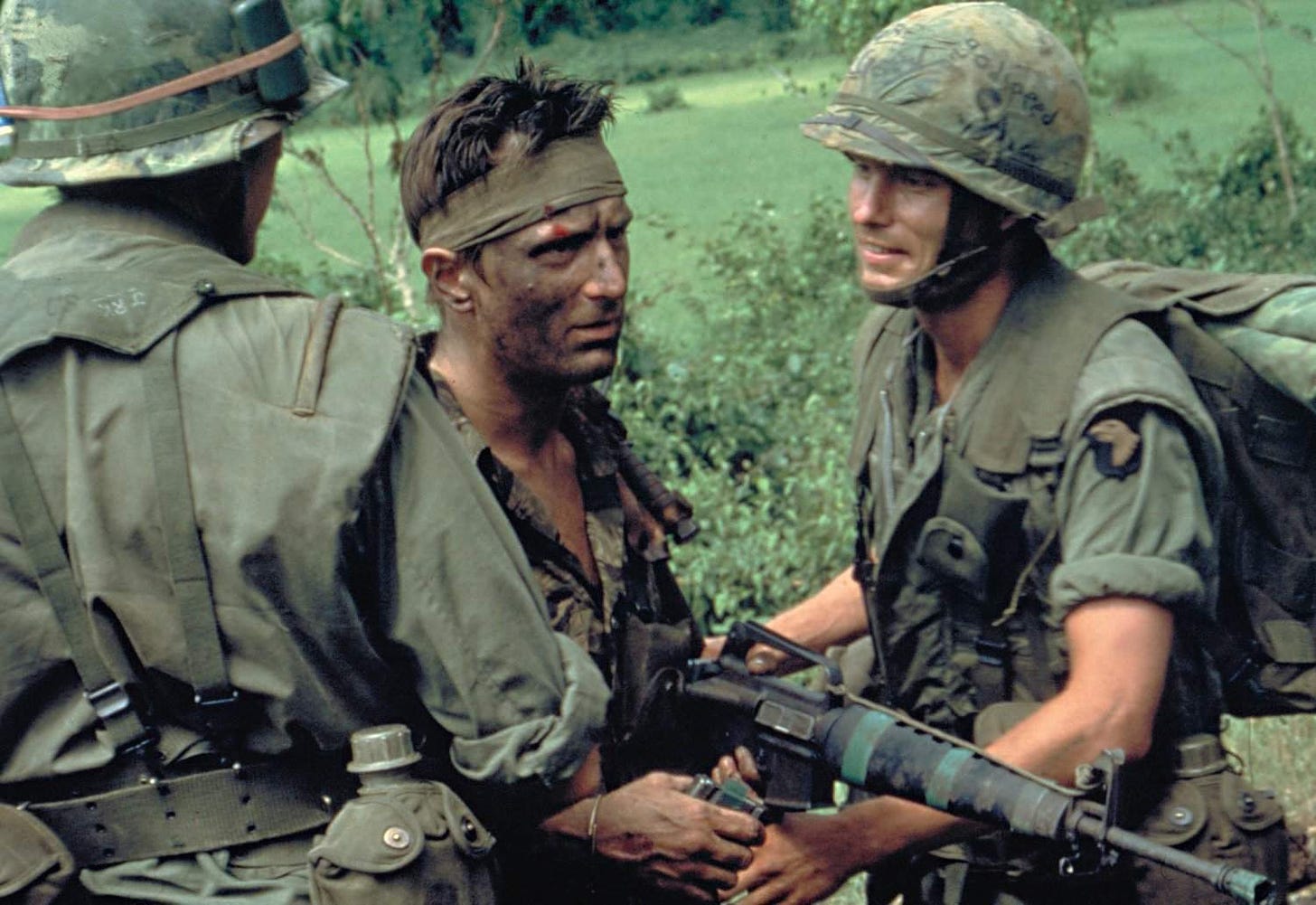
The Deer Hunter (1978). Credit: Universal Pictures.
Despite their differing ideologies, both of these films belong to a regrettable subgenre of Vietnam War movies—a canon of films that attempt to make sense of American intervention in Southeast Asia. These movies leverage real-life conflict as a backdrop for cinematic intrigue (whatever that means).
To explore how popular media utilizes historical settings, I analyzed Wikipedia summaries for over 30,000 movies and novels, searching for mentions of specific years in these story synopses. When we look at the historical periods most often depicted on screen (grouped by movie release decade), we find a consistent focus on recent events—in line with The Deer Hunter's depiction of Vietnam a mere fifteen years after the war's beginning.

At the risk of sounding reductionist, films of the 1950s and 1960s focused on depictions of the 1940s and WWII, until this historical fixation was supplanted by stories set against the backdrop of the Civil Rights Movement, the space race, 1960s counterculture, the Cold War, and the Vietnam War. In the 1970s, 1980s, and 1990s, movies like Apocalypse Now, Platoon, Apollo 13, JFK, Malcolm X, and Full Metal Jacket brought this chaotic period to life, dramatizing these accounts through an often critical lens.
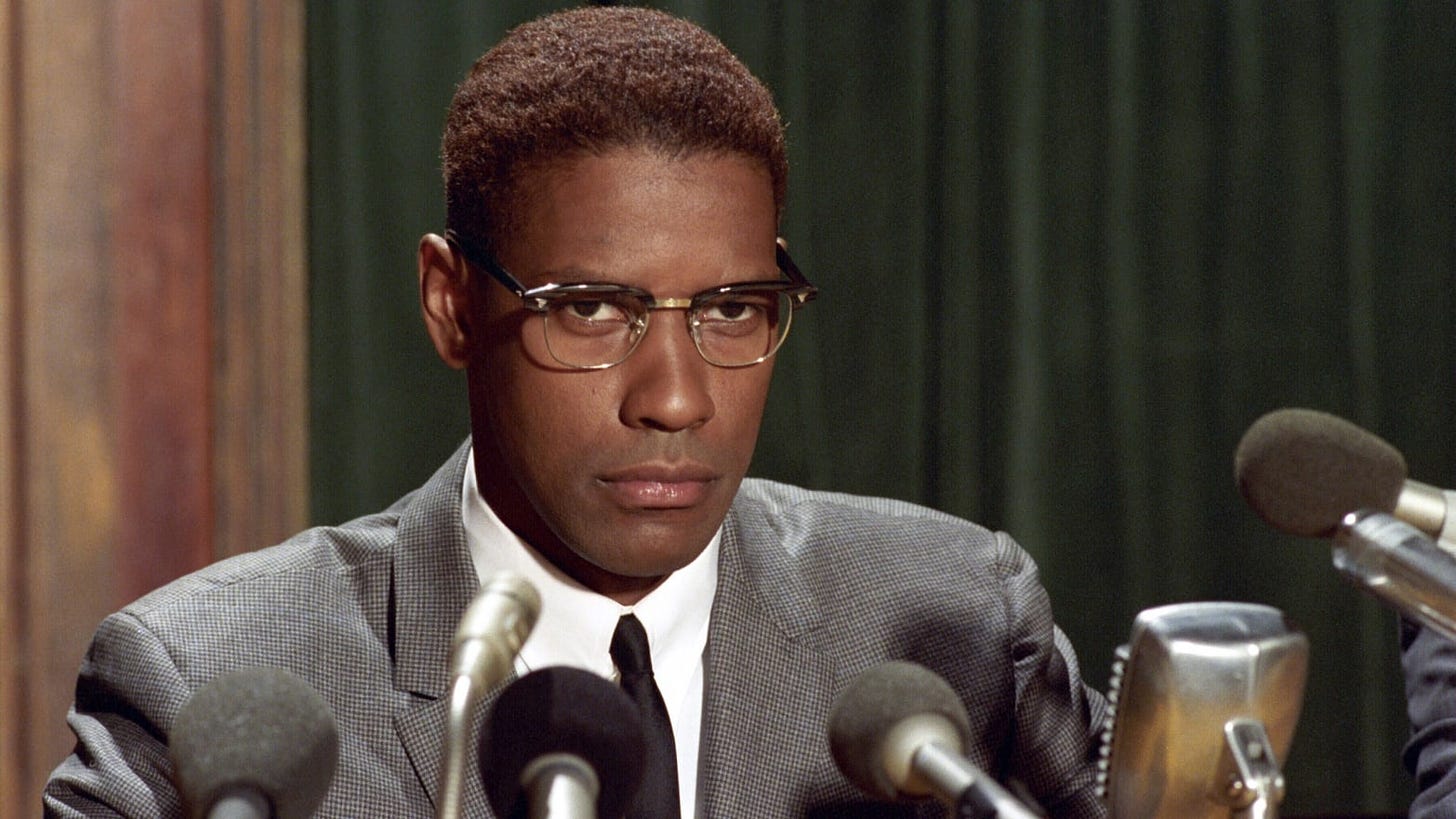
Malcolm X (1992). Credit: Warner Brothers.
The 2000s frequently used the 1980s as a backdrop for comedy or satire, with films like American Psycho, 13 Going on 30, Adventureland, and Wet Hot American Summer highlighting the era's conspicuous consumption and aggressive neon color palette.
The 2010s saw the rise of intellectual property as the need for near-universal brand awareness became a predicate for film development. Stories like The Social Network, Moneyball, Jobs, Concussion, and Sully centered on heavily publicized persons or events that achieved mainstream awareness within the previous decade or two. In today's Hollywood, history is yet another form of intellectual property (especially biopics).
We observe similar trends in the literary world, with novels from the 1950s and 1960s showcasing stories set in the 1940s, and works from the 1970s and 1980s utilizing the 1960s for their setting.

But then, something funny happened. In the 1990s, literature inexplicably shifted its focus back to the 1940s, driven by the popularity of WWII stories like Schindler's List, Band of Brothers, The English Patient, The Thin Red Line, and other chronicles of heroism and barbarity. Somehow, a series of WWII blockbusters and New York Times best-sellers prompted a mass reexamination of the 1940s.
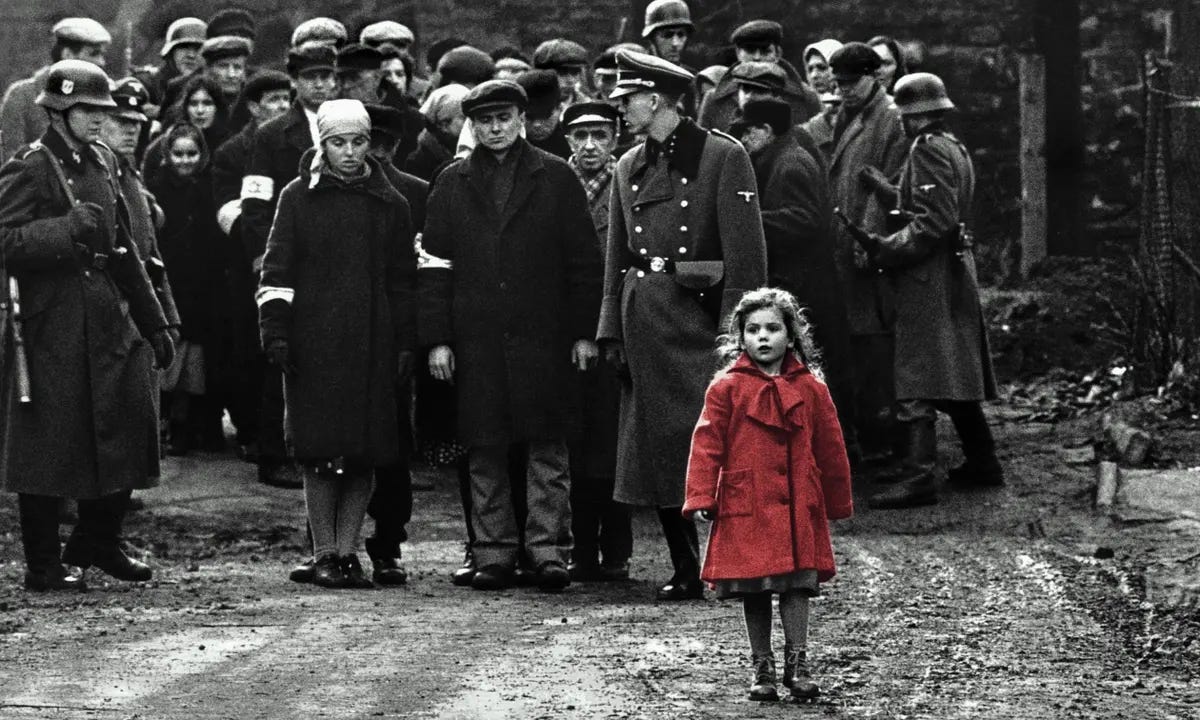
Schindler’s List (1993). Credit: Universal Pictures.
Ultimately, the popularity of this subgenre waned by the turn of the century, with the 2000s and 2010s shifting focus to the comparatively less chaotic 1990s, continuing the trend of fictionalizing decades-old historical events. In film and literature, a desire exists to catalog and dissect the recent past, ultimately fostering canonical movements like the 1990s WWII epic and the 1970s Cold War spy film.
Need Help with a Data Project?
Enjoying the article thus far and want to chat about data and statistics? Need help with a data or research project? Well, you’re in luck because Stat Significant offers data science and data journalism consulting services. Reach out if you’d like to learn more.
Email [email protected]
How Long Until A Historical Era Is Depicted in Films and Novels?
When we analyze all works produced in a given decade (with settings across the entirety of human history), the median timespan between a project’s release date and that story’s setting is anywhere from 25 to 50 years—with this gap slowly widening over time for novels.
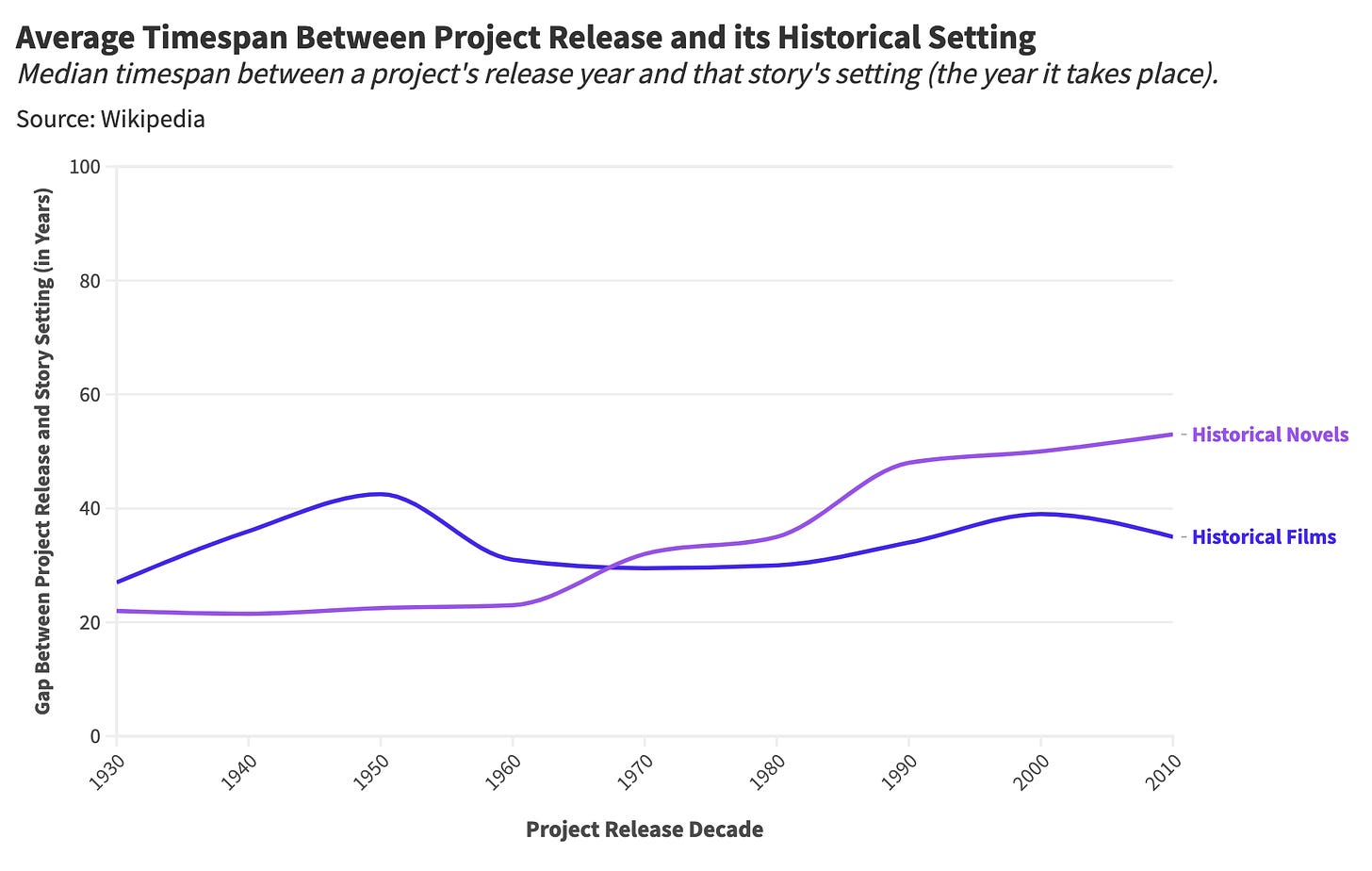
There appear to be two cultural trends at play:
An observed period of narrative ripening: there is a relatively consistent waiting period between a historical era and its use in popular fiction. World War II, the Civil Rights Movement, and the Cold War can't be examined immediately; there is a sweet spot at which source material remains relevant (but not too relevant) to people's lives. Plus, there is a need for perspective on such events—to cultivate distance and comprehend their legacy.
An enduring fixation on the 1940s and 1960s: there is an evergreen quality to the global conflict and cultural discord of the 1940s and 1960s. Public fascination with these decades will exist forever, and there are countless stories to be mined from these totemic periods.
This data begs questions regarding depictions of our contemporary history for future generations. What will portrayals of COVID-19, the 2016 American presidential election, and the Russian-Ukranian war look like in 2040 or 2060? Will audiences be ready for these stories? Will enough time (but not too much time) have passed?
An interesting wrinkle of this analysis was the lack of fictional depictions of 9/11. Some popular films and novels have drawn inspiration from these events, like Extremely Loud and Incredibly Close, United 93, and World Trade Center, but stories in the 2010s and 2020s have primarily avoided this tragedy.
Perhaps 9/11 is simply too harrowing to be relived, or maybe audiences appreciate distance between works of fiction and their own reality. Most audiences were unfamiliar with the exact events of Schindler's List or Full Metal Jacket—they didn't watch these tragedies unfold live on television. Maybe this is a testament to the power of escapism—our embrace of stories removed from our own day-to-day (even if those events are tragic).
Final Thoughts: A Regrettable Canon

The Zone of Interest (2023). Credit: A24.
Jonathan Glazer's The Zone of Interest is unlike any Holocaust film I've seen. The film depicts an SS officer's family living comfortably on the other side of Auschwitz, shot as if it were a documentary or reality TV show, highlighting the stark contrast between the normalcy of their lives and the horrors of the Holocaust. Watching this movie made me realize I had become accustomed to certain story structures and conventions in Holocaust movies. Hollywood films typically require a formal three-act structure with narrative resolution by the film's conclusion. Remarkably, The Zone of Interest bypasses these constructs and presents a vérité portrait of an everyday family living amidst unspeakable evil—a story unconcerned with entertainment value.
When it comes to depictions of historical events, there exists a tension between two cultural phenomena:
Historical documentation: Period pieces serve as historical documents, conveying necessary history for future generations.
Commercialism: Books and films are products that appeal to consumer tastes. Artistic replication and commercial standardization foster an association between specific eras and certain story conventions. This standardization births subgenres like World War II movies and Vietnam War films—projects that develop well-worn storytelling tropes over time (to the point where they're ruthlessly mocked in a movie like Tropic Thunder). Thirty World War II movies later, it may feel like we're watching a photocopy of a photocopy.
My understanding of the Holocaust is heavily shaped by films like Schindler's List and The Pianist. And yet, there is an unfortunate reality underpinning these stories—they need to bear witness while simultaneously entertaining audiences (whatever that means).
Few people want to read a 900-page doorstop that catalogs WWII history, so we rely on mimetic fictionalizations of these events. Sometimes, these works misportray or misinform—like the case of The Green Berets—and sometimes, they provide a high-fidelity window into our past. Ground truth does exist; screenwriters and novelists are doing their best to reconstruct these truths (while also making money).
Thanks for reading Stat Significant! Subscribe for free to receive new posts and support my work.
Want to chat about data and statistics? Have an interesting data project? Just want to say hi? Email [email protected]